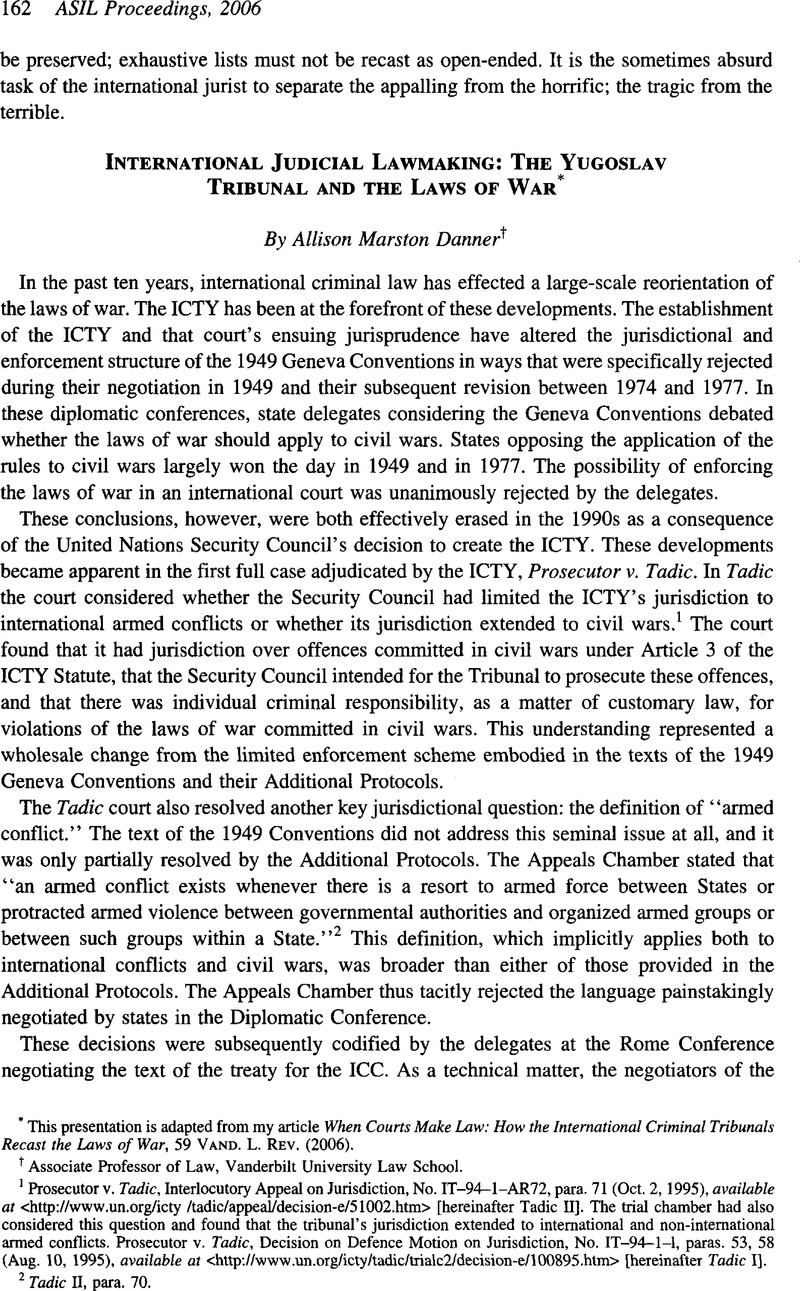Published online by Cambridge University Press: 28 February 2017

This presentation is adapted from my article When Courts Make Law: How the International Criminal Tribunals Recast the Laws of War, 59 Vand. L. Rev. (2006).
1 Prosecutor v. Tadic, Interlocutory Appeal on Jurisdiction, No. IT-94-1-AR72, para. 71 (Oct. 2, 1995), available at <http://www.un.org/icty/tadic/appeal/decision-e/51002.htm> [hereinafter Tadic II]. The trial chamber had also considered this question and found that the tribunal’s jurisdiction extended to international and non-international armed conflicts. Prosecutor v. Tadic, Decision on Defence Motion on Jurisdiction, No. IT-94-1-1, paras. 53, 58 (Aug. 10, 1995), available at <http://www.un.org/icty/tadic/trialc2/decision-e/100895.htm> [hereinafter Tadic I].
2 Tadic II, para. 70.
3 See Rome Statute of the International Criminal Court, Art. 8, July 17, 1998, UN Doc. A/Conf.183/9*, 2187 UNTS 90, [hereinafter Rome Statute] (distinguishing between “international armed conflict” in paragraph 2(b) and “armed conflict not of an international character” in paragraphs 2(c)-(f)).
4 Id., Art. 8(2)(e)-(f). The Tadic definition states that “an armed conflict exists whenever there is a resort to armed force between States or protracted armed violence between governmental authorities and organized armed groups or between such groups within a State.” Tadic II, supra note 1, para. 70.